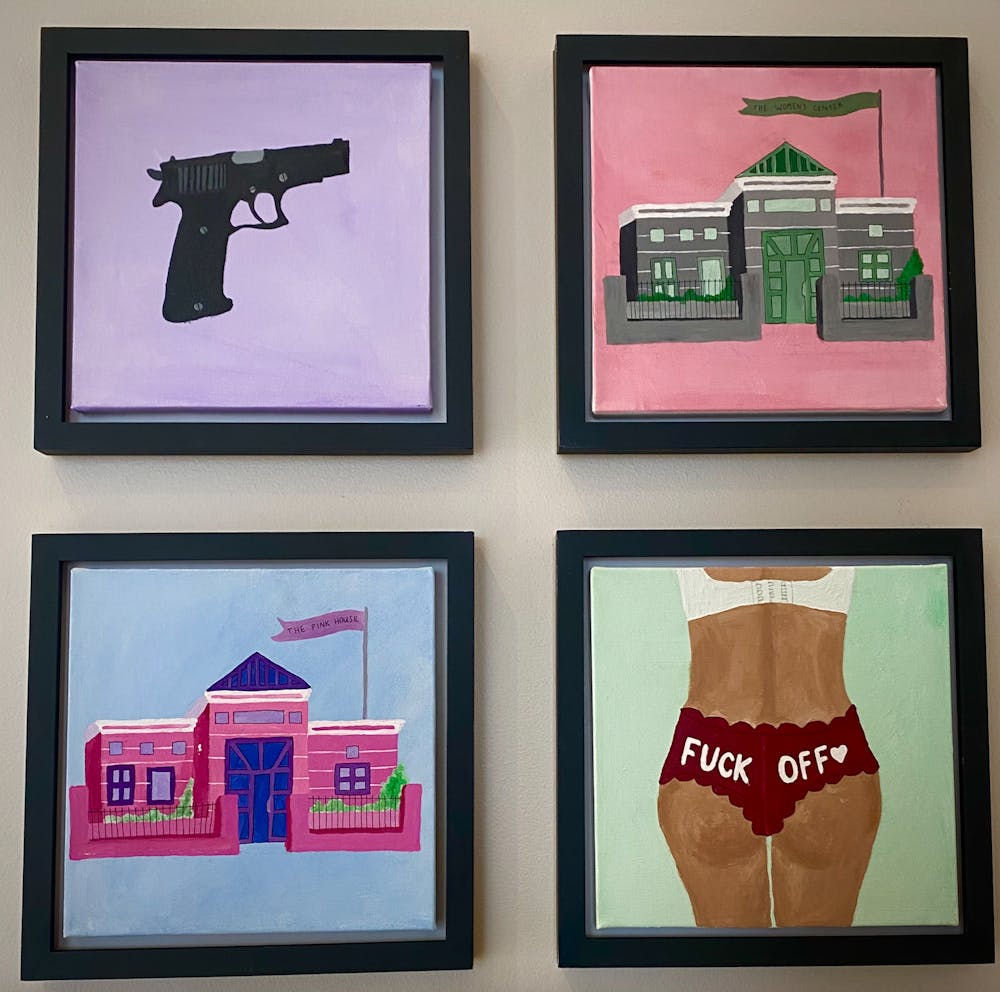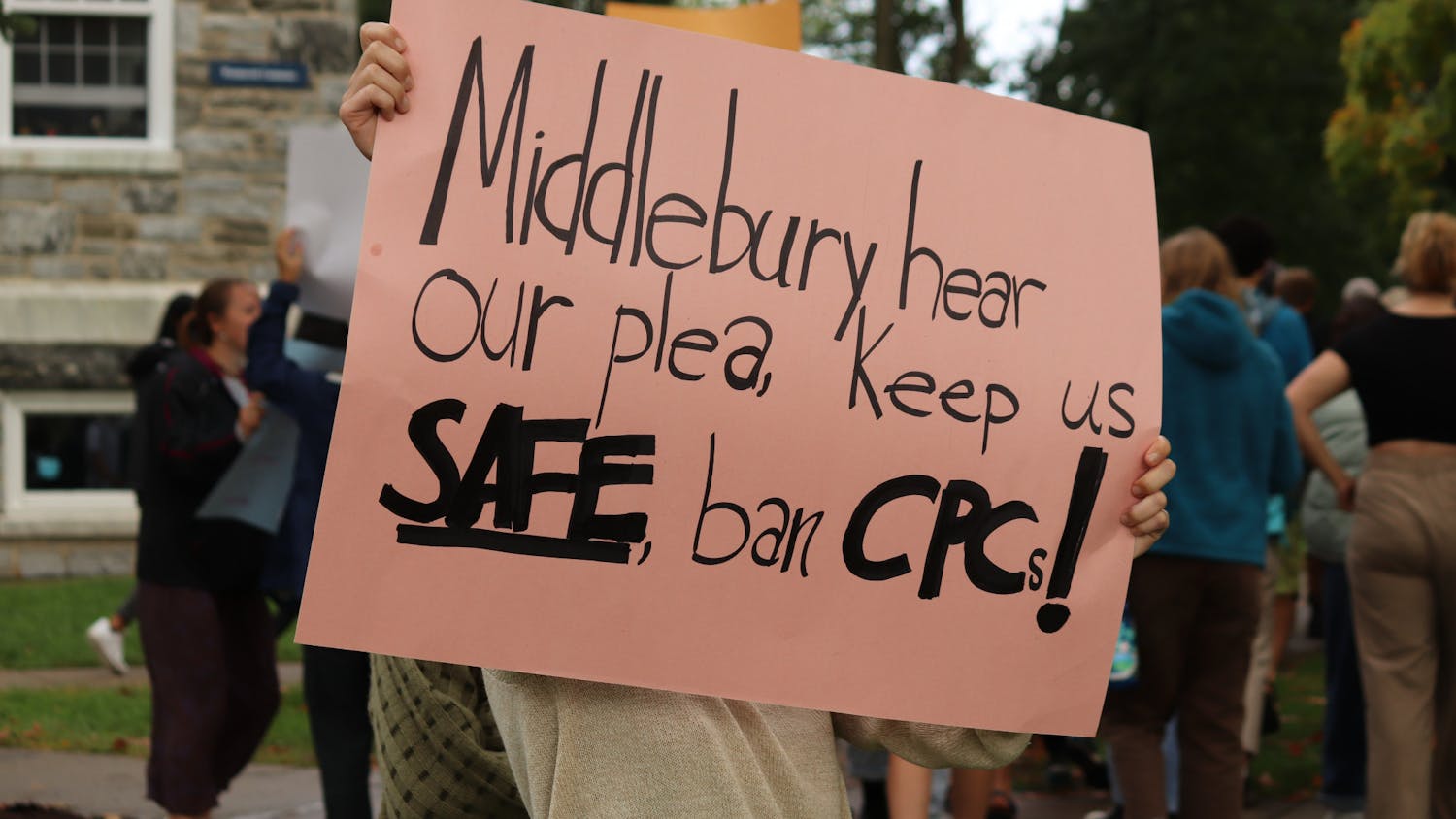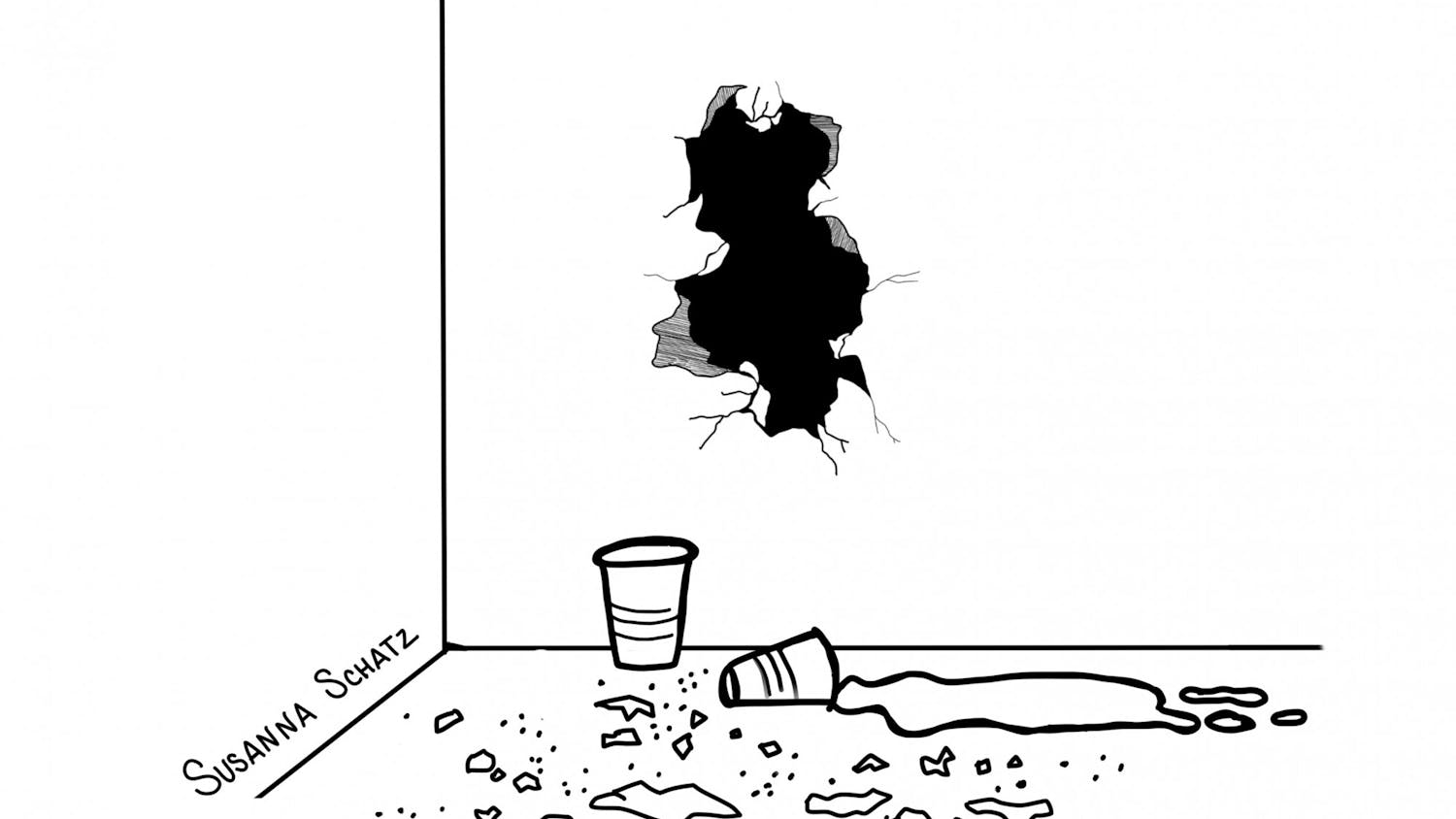On Tuesday, Sept. 27, student members of the college’s first Public Feminism Fellowship opened an art exhibition called “Visualizing Reproductive Justice: A Call to End Fake Clinics” in the college’s Axinn Center. The exhibit follows in the wake of the U.S. Supreme Court’s decision this June in Dobbs v. Jackson Women’s Health Organization to overturn the constitutional right to abortion upheld by Roe v. Wade for over half a century. In the aftermath of this decision, which ensured that access to abortion will become illegal or severely restricted in at least 26 states, the fellows were among millions across the country grappling with how to resist.
The Public Feminism Fellowship, funded by the Gender, Sexuality, & Feminist Studies Department and the Feminist Resource Center at Chellis House, was developed and facilitated by Carly Thomsen, assistant professor of Gender, Sexuality, & Feminist Studies, as an effort to translate feminist pedagogy beyond the classroom.
“I’ve been trying to figure out what resistance looks like in this moment when litigation and policy are becoming increasingly impossible in terms of finding ways to create a more socially just world,” Thomsen said. “I think one way to do that is through inviting people into conversation through art.”
This summer, as much of the nation grieved the roll-back of Roe v. Wade, Kamari Williams ’22.5, Isabel Pérez Martín ’25, Alexis Welch ’22.5, Elissa Asch ’22.5, Luci Bryson ’25, Emily Ribeiro ’24 and M. Farley ’24.5 gathered alongside Thomsen each week to study feminist and queer theoretical texts on abortion, reproductive justice and crisis pregnancy centers, developing knowledge to ultimately transform into something tangible. “The result of our work” reads the fellows’ collective artist statement, “is this exhibit — a translation of the theoretical into the material, an invitation into our conversations.”
“I think that art lowers the bar of entry into academic spaces, or in discourse about complex topics,” Williams wrote to The Campus. “I believe that information should reach the audiences that it’s designed to “protect” or center because if not, what’s the use?”
While the art pieces in the exhibit range in medium, style and focus, nearly all of them criticize crisis pregnancy centers (CPCs). According to a collective artist statement, CPCs are religiously-motivated non-profit organizations that pose as medical clinics in order to spread misinformation and serve an anti-abortion agenda, constituting a lesser-known but particularly insidious part of the U.S. abortion story.
“CPCs rely on and exploit the general lack of medical knowledge in circulation about reproductive health,” Ribeiro said.
Many of the pieces explore the dangers of CPCs directly, like Asch’s sculpture “Fenced In,” which considers geofencing, a tactic through which abortion opponents use location data to profile and target individuals with ads promoting CPCs and adoption agencies.
“There are words on every segment of the fence displaying a different lie that crisis pregnancy centers tell to the people who walk through their doors,” Asch said.
“Women bleed out during abortions,” one panel reads.
“People think about [abortion] as dangerous, traumatizing, difficult and painful. But that’s all a narrative that’s been created. In fact, childbirth is 14 times more dangerous than getting an abortion,” Asch said, citing a 2012 study.
For many fellows, creating art was a means through which to process personal relationships to reproductive justice.
“CPCs manipulate Christian doctrine to empower violating practices,” wrote Farley, who grew up in an anti-abortion Catholic community, in a text to The Campus. “I wanted my art to offer a rebuttal to this practice…in pursuit of a higher ethical stance.”
“When I was reading about crisis pregnancy centers, I felt very alienated and felt like my body was not mine.” Welch said, discussing her piece, “To Be Seen As A Woman.”
Two weeks ago, a student-led demonstration, co-organized by Asch and Bella Cady ’22.5, protested a local CPC, The Women’s Center, which has been permitted a table at the Student Involvement Fair for several years. This summer, Asch founded the NESCAC Coalition to Ban CPCs from campuses, garnering support from students at every NESCAC school and participation in organizing from eight of the eleven so far.
“Now more than ever it feels relevant because people are really struggling mentally with what’s happening,” Bryson said.
“The biggest challenge [of the fellowship] was coming to the harsh realization of the practices [CPCs] establish and the repercussions they could have on people,” Pérez Martín said.
“In terms of polarizing topics, abortion is considered to be at the top of the list,” Thomsen said. “But I think that’s a really limiting way of understanding abortion. Within that framework, [CPCs] become synonymous with the pro-life position. But even people who don’t believe in abortion can and should be opposed to [CPCs] because of the deceptive strategies that they use. Sometimes the framing of issues is precisely what limits our ability to address them effectively.”
“There’s a concept in protest art that’s frequently used where you visualize the future that you want to see through your artwork,” Welch said, discussing her photograph “When He Gives You Lemons,” a self-portrait taken outside a megachurch in Springfield, Ill. that imagines a reality in which CPCs are regulated.
In a sense, it seems like this is what the entire exhibit is doing — dreaming up a world where reproductive justice is the center of attention, something no one can look away from.
“You can’t really hide from these works of art,” Welch said. “Hopefully that can help other people step into action.”
Olivia Pintair '22.5




